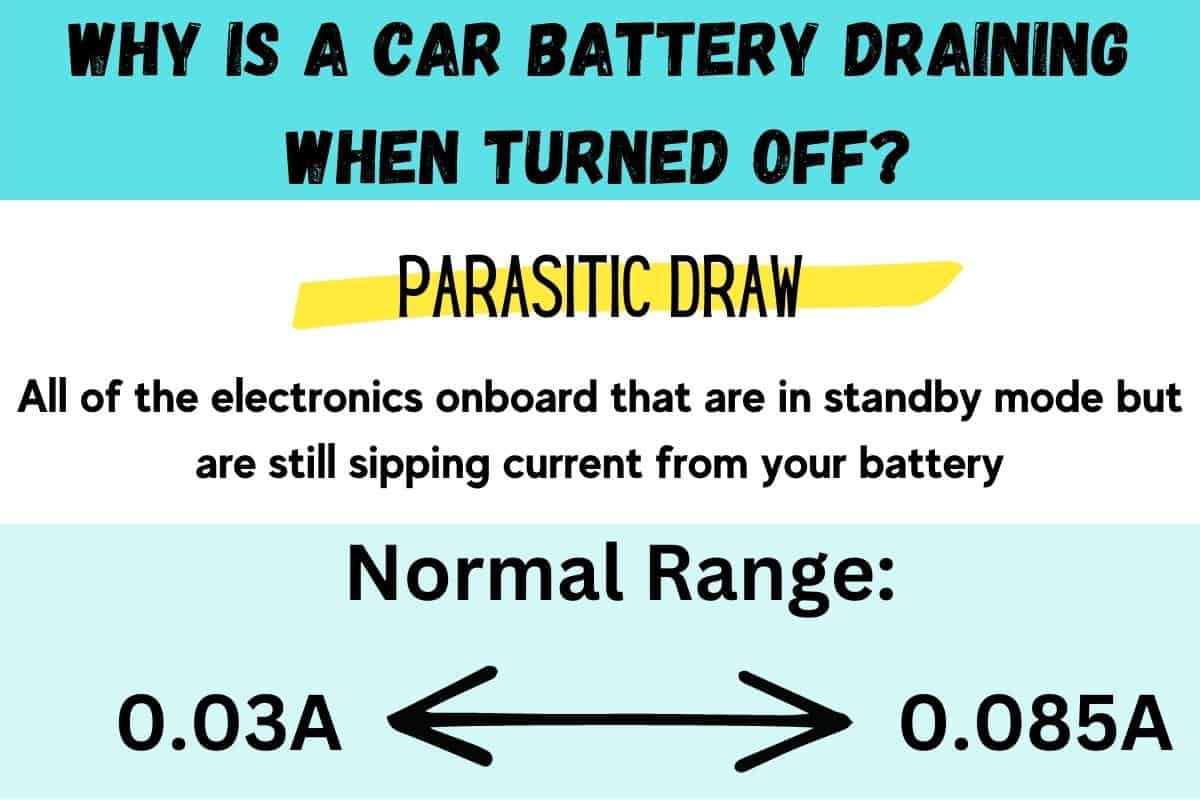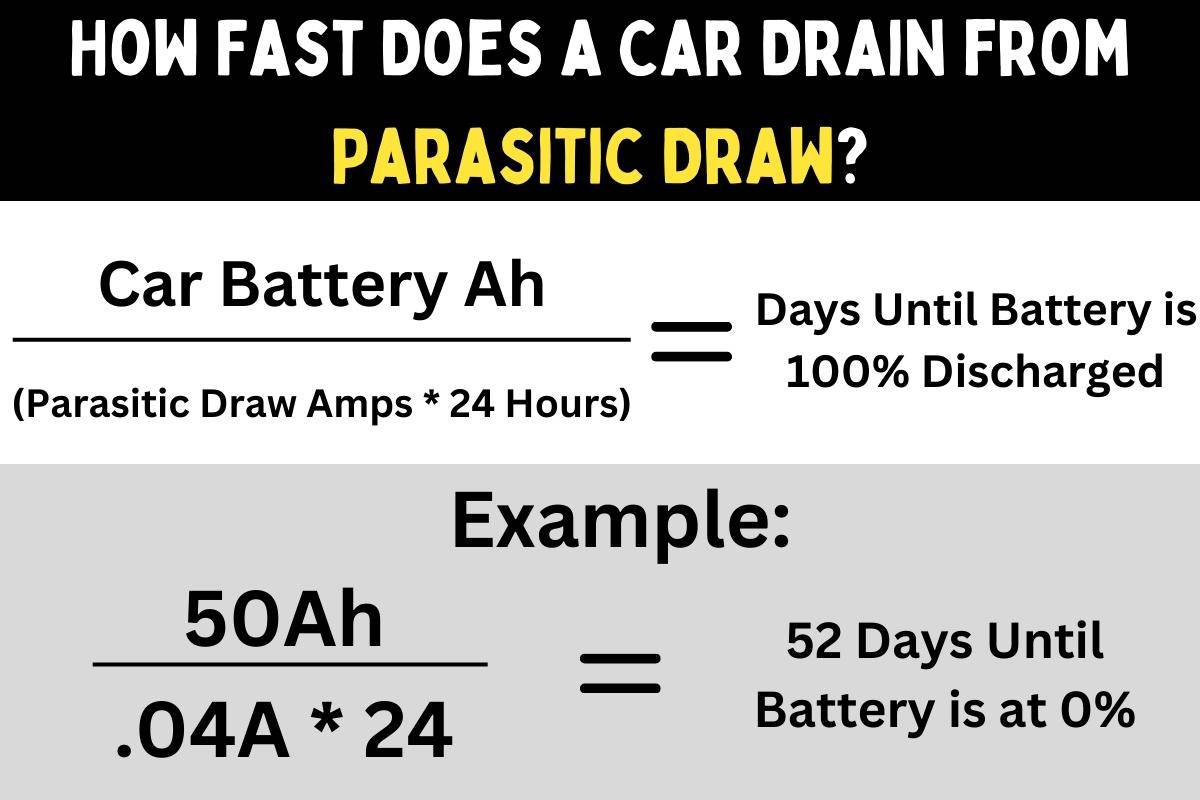Why is My Car Battery Draining when the Car is Off?
Unfortunately, your car’s battery is draining while it is sitting in the driveway doing nothing (or at least it appears to be). This is caused primarily by a term called “parasitic draw”.
Essentially, parasitic draw is the anti-theft system and all of the electronics in your car that are just in sleep mode instead of being truly turned off when you remove the key from the ignition.
Modern vehicles are so computerized at this point and when people want to drive somewhere, they typically turn the key and put it in gear without giving it any thought. They never reflect on all of the electronics and sensors that are involved.
If your car truly shut down all of its systems when you removed the key, it would be like booting up a computer from a cold start every time you wanted to go somewhere. Realistically, this would be a hassle and time consuming. Instead, everything goes into sleep mode so it’s just like closing the lid of your laptop when it’s not in use and opening the lid once you’re ready to start typing again.

Even though sleep mode is efficient, it still draws on the battery at a typical range of 30-85mA (milliamps), or 0.03-0.085 amps when your car is seemingly doing nothing.
Additional reasons that your car battery may be draining include an abnormal parasitic draw (such as leaving the interior lights on overnight) or having an internal problem with your battery (such as an internal short because your plates became damaged and are now touching or lead sulfate crystals have formed and have now created a bridge between the plates).
How Fast Does a Car Battery Drain?
To determine a ballpark estimate of how quickly your car will drain, you will need to know the parasitic draw on the battery and the capacity of your battery (amp hours, or Ah).
A simple formula would be as follows:
Car battery Ah / (parasitic draw in amps * 24 hours) = time in days until 100% discharge
Keep in mind that your battery might not start your vehicle if it drops below 50%, so you’ll want to divide that number by 2 just to be conservative.
So, for example, if we have a 50Ah battery and a parasitic draw of 0.04amps, then we will have the following math:
50 / (0.04 * 24) = 52 days until the car battery is at 0%

To check your battery’s Ah rating, check the sticker on top. If you’re lucky it’ll be there, but more than likely you’ll see a RC or CCA rating (reserve capacity, and cold cranking amps, respectively).
If you see those ratings, you can estimate where you would fall on that scale with the table below:
| 36-46.2 Ah | 46.2-58.8 Ah | 58.8-111 Ah |
|---|---|---|
| 200-315 CCA | 315-550 CCA | 550-1,000 CCA |
| 40-60 RC | 60-85 RC | 85-190 RC |
To measure your parasitic draw, you can use a multimeter to measure amps by removing the cable from the negative terminal of your battery and placing one lead of the multimeter to the cable and the other to the terminal of the battery.
Here’s a great video below for guiding you through the process:
How to Stop a Car Battery From Draining?
If your car battery starts draining dramatically overnight when it was not doing it before, then you more than likely have an abnormal parasitic draw. There’s probably an interior light that’s not shutting off or something similar. I highly recommend watching the video above to help diagnose and remedy your problem.
Essentially, you’re going to need to use your multimeter on the amp setting, and have it act as an intermediary between the negative terminal of your battery and the cable that is supposed to attach to the negative terminal.
Once this is done, you’ll get a baseline for what your parasitic draw is. Normal is between 0.03 and 0.085 amps — newer cars with more electronics will be at the higher end of this range. If your parasitic draw exceeds the high end of this range, you can proceed with the following step.
One by one, you’ll remove fuses from your fuse boxes and consult with the multimeter which is still bridging the gap between the negative cable and the negative terminal of the battery. When the amps drop after pulling a particular fuse, then you’ve found your problem. Consult with your manual and any applicable wiring diagrams to trace that fuse and the circuit it is on.
How Do I Stop My Car Battery from Draining on Vacation?
The two easiest options for keeping your battery healthy while you’re on vacation or won’t be driving for an extended period of time is to either disconnect your battery’s negative terminal or to connect a float charger.
By disconnecting your negative terminal, you will stop all circuits from completing and therefore there will be no parasitic draw. However, your battery will still drop about 5% each month due to a natural process called “self discharge”.
By hooking up a float charger, like this one that I use from Amazon, the charger can be left hooked up to the battery indefinitely and the terminals do not need to be disconnected. The charger will bring the battery to 100% state of charge and will only turn on as the battery naturally self-discharges. You will not overcharge and damage a battery with a quality float charger.
